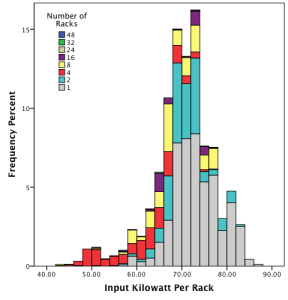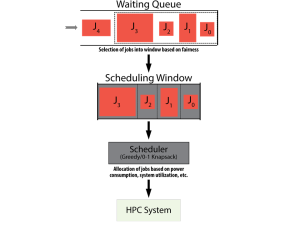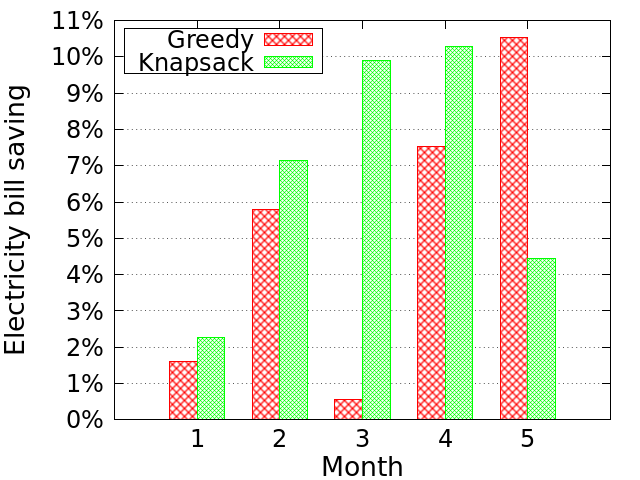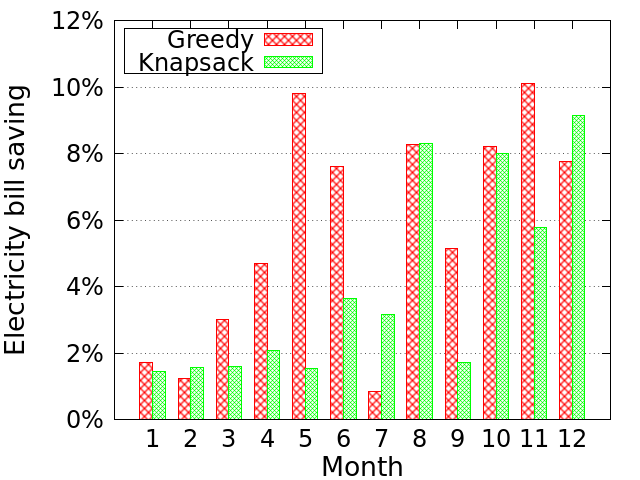As supercomputers continue to grow, so do the associated electricity bills. These costs are now a leading component of total cost of ownership (TCO) of HPC systems. A team from the Illinois Institute of Technology and Argonne National Laboratory aims to reduce electricity expense of HPC systems via a smart batch scheduling mechanism.

Their design is based on two key observations. First, parallel jobs have distinct power consumption profiles, as high as over two times in difference (see Figure 1). Second, dynamic electricity pricing has been widely adopted in North America, as well as many other parts of the world. In US, wholesale electricity prices vary by as much as a factor of 10 from one hour to the next.
In this SC’13 paper, the team proposes a smart, energy aware scheduling approach for HPC systems. It takes the variation of electricity price into consideration as a means to make better decisions of the timing of scheduling jobs with diverse power profiles.
More specifically, it dispatches the jobs with higher power consumption during the off-peak period, and the jobs with lower power consumption during the on-peak period. HPC systems require a tremendous capital investment, hence taking full advantage of this expensive resource is of great importance to HPC centers.

Toward this end, the team proposes a novel window-based scheduling approach and two scheduling policies, namely Greedy and 0-1 knapsack (see Figure 2). The design can reduce the electricity bill while also being an effective way to schedule jobs without degrading system utilization.
The team validated their design by means of trace-based simulations. They demonstrated that the design can cut the electricity bill by up to 23% while causing negligible impact on the system utilization and scheduling fairness. Considering HPC centers often spend millions of dollars on even the least expensive energy contracts, such savings can translate into a reduction of hundreds of thousands in terms of TCO. They also made several interesting findings from their trace-based simulations:
- The amount of electricity bill savings is influenced by electricity pricing ratio, power profile ratio, and scheduling frequency;
- Workload characteristics can impact the performance of their design in terms of electricity bill savings;
- Both the Greedy and the Knapsack policies are capable of reducing the electricity bill with little or no impact to system utilization; and
- For typical HPC workloads, a scheduling window of 10-30 jobs is sufficient.
|
Figure 3. Electricity bill savings on two systems (left: ANL-BGP and right: SDSC-BLUE) using Greedy and Knapsack scheduling policies |
The team also presents a case study of using the energy aware scheduler on Mira, the 48-rack production IBM Blue Gene/Q at Argonne. They collected system traces and from those extracted job power profiles for jobs run in December 2012 on the machine. The study shows that monthly electricity bill savings could be as high as 9.98%. This is substantial, given the approximately $1M annual electricity bill to power up this machine at Argonne.
Paper schedule:
Session: Energy Management
Time: 2:30pm-3:00pm on Nov. 19
Location: room 401/402/403 at the Colorado Convention Center
Link: http://sc13.supercomputing.org/schedule/event_detail.php?evid=pap433
About the Authors
Author list:
Xu Yang ([email protected]), Ph.D. student at Illinois Institute of Technology
Zhou Zhou ([email protected]), Ph.D. student at Illinois Institute of Technology
Sean Wallace ([email protected]), Ph.D. student at Illinois Institute of Technology
Zhiling Lan ([email protected]), Associate Professor at Illinois Institute of Technology
Wei Tang ([email protected]), Postdoctor at Argonne National Laboratory

































































